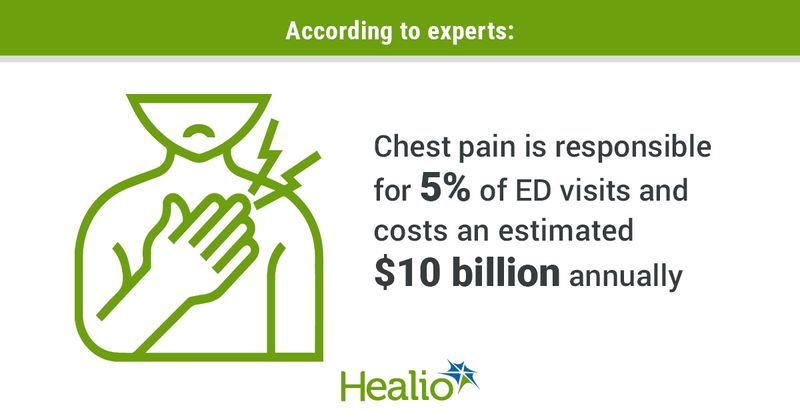First-ever guidance on recurrent, low-risk chest pain is ‘foundational step forward’
The first-ever guidance on recurrent, low-risk chest pain provides a good starting point for addressing a condition that is responsible for 5% of ED visits and costs up to $10 billion annually, one of the guideline authors said.
The guidance is part of a new series of recommendations called the Guidelines for Reasonable Care in the Emergency Department (GRACE), which were created by the Society for Academic Emergency Medicine “to address syndromic presentations in emergency medicine,” Christopher R. Carpenter, MD, a professor of emergency medicine at the Washington University in St. Louis, told Healio Primary Care.

Although the American College of Emergency Physicians and the American Heart Association/American College of Cardiology provide definitions of lower-risk patients with chest pain, “neither addresses the recurrent chest pain scenario,” Carpenter said.

“Of equal importance, neither strictly adheres to the [Grading of Recommendations Assessment, Development and Evaluation (GRADE)] or the Evidence-to-Decision Framework exploring the clinical application of our recommendations through the lens of health equity, costs, acceptability, patient preferences or feasibility,” he said.
Carpenter and colleagues developed the guidance for recurrent, low-risk chest pain based on a review of 38 articles. They used the GRADE approach to assess the certainty of the evidence.
According to the guideline authors:
- a single, high-sensitivity troponin below a validated threshold is recommended to exclude acute coronary syndrome within 30 days in low-risk patients with chest pain lasting more than 3 hours (conditionally recommended, low level of evidence);
- repeat routine stress tests are not recommended in those with a normal stress test within the past 12 months to lower rates of major adverse cardiac events at 30 days (conditionally not recommended, low level of evidence);
- there is not enough evidence to recommend hospitalization (either standard inpatient admission or observational stay) vs. discharge to reduce the occurrence of major adverse cardiac events within 30 days;
- patients with non-obstructive coronary artery disease (stenosis of 50% or less) appearing on angiography within the past 5 years should be referred for expedited outpatient testing as appropriate instead of hospital admittance for inpatient evaluation (conditionally recommended, low level of evidence);
- patients without occlusive coronary artery disease (no stenosis at all) appearing on angiography within 5 years should be referred for expedited outpatient testing as appropriate instead of hospital admittance for inpatient evaluation (conditionally recommended, low level of evidence);
- additional diagnostic testing should not be performed on patients with a previous coronary CT angiography (CCTA) within the past 2 years with no coronary stenosis, except for a single high-sensitivity troponin below a “validated threshold” to exclude acute coronary syndrome within that 2-year time frame (conditionally recommended, moderate level of evidence);
- anxiety and depression screening tools should be used, as they may play a role in a patient’s health care use and return ED visits (conditionally recommended, very low level of evidence); and
- patients should be referred for anxiety or depression management, as this may impact a patient’s health care use and return ED visits (conditionally recommended, low level of evidence).
Carpenter noted that the recommendation on CCTA “may have the most profound long-term impact” on the health care community.
“The majority of emergency departments do not have access to CCTA currently, but our writing panel felt that the quality and volume of research supported a moderate level of evidence and conditional recommendation in favor of CCTA,” he said. “Personally, I worry about over-testing with CCTA, but the recommendation also provides a 2-year shelf life for CCTA, so the test would not need to be repeated each visit.”
Carpenter acknowledged that the recommendations lack a strong level of evidence, “which is probably why other organizations have not addressed this topic,” he said
“However, recurrent, low-risk chest pain patients are presenting today and every day,” he said. “Physicians require [current practice guidelines] to support decision-making and shared decision-making today. We do not know when (or if) that future research will arrive, so GRACE provides a foundational first step forward.”

